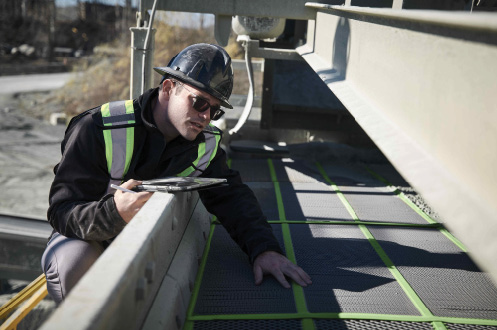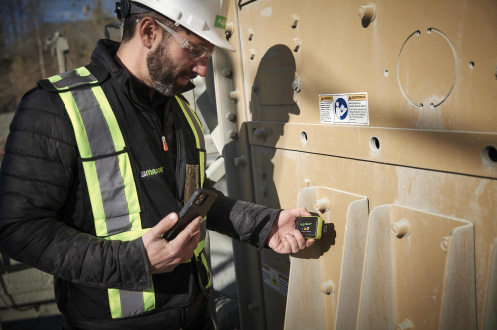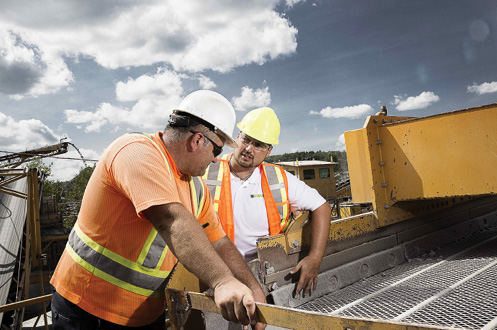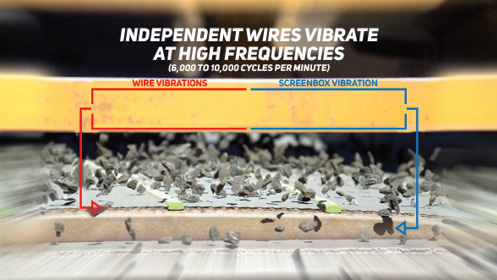Solving the biggest coal screening challenges as material specifications for all industries, including coal, have tightened.
By Serge Raymond

Energy is a hot topic in any country or socioeconomic circle these days. Though politicians will forever argue and debate the virtues and evils of one system of energy over another, the majority of the population no matter what part of the globe they live in, simply want to make sure that when they need heat, light or transportation, it’s readily and economically available. In 2022, the demand for coal, especially in the power generation industry, hit a record high.
At the same time, the specs and requirements for coal production have gotten even tighter and the pressure on mines to find more sustainable processes have never been more rigid. Coal operations must examine many facets of their business to ensure efficiency and sustainability, and one significant consideration is screening and classifying.
When it comes to screening coal, most operations will agree that tighter specs, issues with blinding and pegging and constant need to increase production are three of the most common challenges they face. While it’s second nature to immediately look at the screen box for solutions, the key may lie in screen media.

TIGHTER SPECIFICATIONS = GREATER MARGINS
Throughout the past 20 years, the material specifications for all industries have tightened – including coal. While the once standard increments of woven wire cloth openings used to adequately meet all specifications, today’s tighter specs demand infinitely more size options to produce the requirements for various applications and uses. Often the premium products offering the most margin require the most difficult specifications to attain.
Because coal is light and not abrasive, most coal screening operations use standard woven wire screens. These mass-produced screens are inexpensive and old school – seemingly an easy decision. But, when precision for a variety of materials is key, old-school media is often not the right path. Because of the design and weaving process of traditional woven wire, only specific opening sizes in 1/16-inch increments are available.
Innovative high vibration media styles eliminate the design limitations of weaving, allowing infinitely minute adjustments of wire spacing to accommodate a plethora of specification requirements. This provides coal mines with the capacity to meet specifications and capitalize on the products or specifications that provide the highest profit margins.

BLINDING AND PEGGING
The lightweight and relatively soft properties of coal lead to the production of many fines that stick to the surface of the screen causing issues with blinding. Though running the coal through a wash plant before screening may reduce the fines, the added moisture – even 5% – leads to equally troubling issues with blinding. Whether from the sticky fines or the moisture laden slime, blinding and pegging present a major problem to both quality and quantity of the final screened product. Left unchecked, blinding and pegging lead to incomplete screening and contaminated product or the need to stop the screen three to four times a day for a thorough cleaning. Each cleaning stops production completely anywhere from 20 to 30 minutes.
Depending on how severe the blinding or pegging issue, if a chain is needed to vibrate the material off, not only do producers need to figure in the cost of shut down, but also the cost of the added wear and potential damage to the screen media. If cleanings must occur four times a day, it results in upwards of two hours of lost production every week. With one ton of coal priced at approximately $30 and 250 tons processed per hour, that translates to $15,000 of lost production each week or more than $60,000 per month. Over the course of an average year, a coal mine is effectively leaving more than $720,000 on the table.
Alternative screen media offers a more efficient solution to overcoming the blinding and pegging issue. While traditional woven wire cloth relies solely on the vibration of the screen box to create the frequency needed to stratify the material, high vibration screens are designed in a manner that allows each wire to vibrate independently enhancing the overall effectiveness and allowing the screen to self-clean. The high frequency vibration produced by the screen wires, virtually eliminates blinding and pegging erasing the need to prewash the coal or shutdown the machines for cleaning. In turn, eliminating that step can also reduce water use and costs leading to a more sustainable overall process.
To further reduce the chance of material buildup, the high-vibration screens offer customizations using stainless steel wire. While the porous nature of standard wire might attract the coal powder allowing it to build up and eventually close off the entire opening, the stainless-steel wire combined with high vibration effectively eliminates the chance of material buildup.

THE PROOF IS IN PRODUCTION
Often in screening applications, mines focus heavily on reducing the frequency of screen change outs. While both the cost of new media and the time to change out the screen panels can result in significant costs, the significance is often misplaced. Rather than focusing on cutting costs, coal mines would be better served focusing on making money. Ultimately, in achieving higher production, most costs can be offset or completely negated. While traditional woven wire might last more than a year between change outs in coal applications, that should actually be a flag to a coal mine, alerting them that they are significantly under producing.
By switching to a high-vibration screen, most coal mines will see an increase of upwards of 40% in production. Though pushing more material across the screens may result in slightly more frequent screen change outs, the revenue generated by increased production and a better-quality product more than offsets the additional screen media costs.
Performance is of course only one aspect of productivity. The other? Uptime. Any coal mine knows that the key to successful production is avoiding unscheduled downtime and instead employing tools to optimize performance and predict maintenance so it can be completed at scheduled times rather than unexpectedly.
One tool some screen manufacturers offer to monitor the health of the screening system is predictive vibration analysis. Predictive vibration analysis, which includes vibration analysis tests, detects miniscule changes in baseline operation before the effects are seen in screening performance and output. Some vibration analysis systems even capture data while the machines are running material. This provides producers with up-to-date information on the machine and operational health without making sacrifices in production time.
Issues such as improper tensioning or a broken wire can be identified and remedied through scheduled downtime. The system also gives an indication of how the screening machine is working allowing operations insight into adjustments or maintenance on the machine that could help improve productivity.
Building on those benefits of automation and data collection, some screen media manufacturers also embed tracking chips into each screen panel. These chips can be easily scanned to get data on the machine placement, the specs of the screen and other relevant data for both reorder and flexibility in changing specs.
Rather than worrying about putting screen panels in inventory to switch to a different specification, coal mines know that the data for the placement of the screen is housed in the chip which can easily be scanned for precise placement when the specifications change again. The data contained in the chip also makes it simple and seamless to reorder screen media.
MAKING THE SWITCH
While the success of a coal mine’s processing is often placed on the screening machine itself, the screen media likely plays a more important role. Progressive mines with a comprehensive and strong understanding of frequency and amplitude and the overall effects of vibration and movement, recognize that the static screen panels of the past simply fail to meet the challenges they face today. As a result, customized high vibration screen media continues to grow as the solution for the myriad of challenges in the coal industry.
Editor’s note: Serge Raymond is a product specialist for MAJOR.
